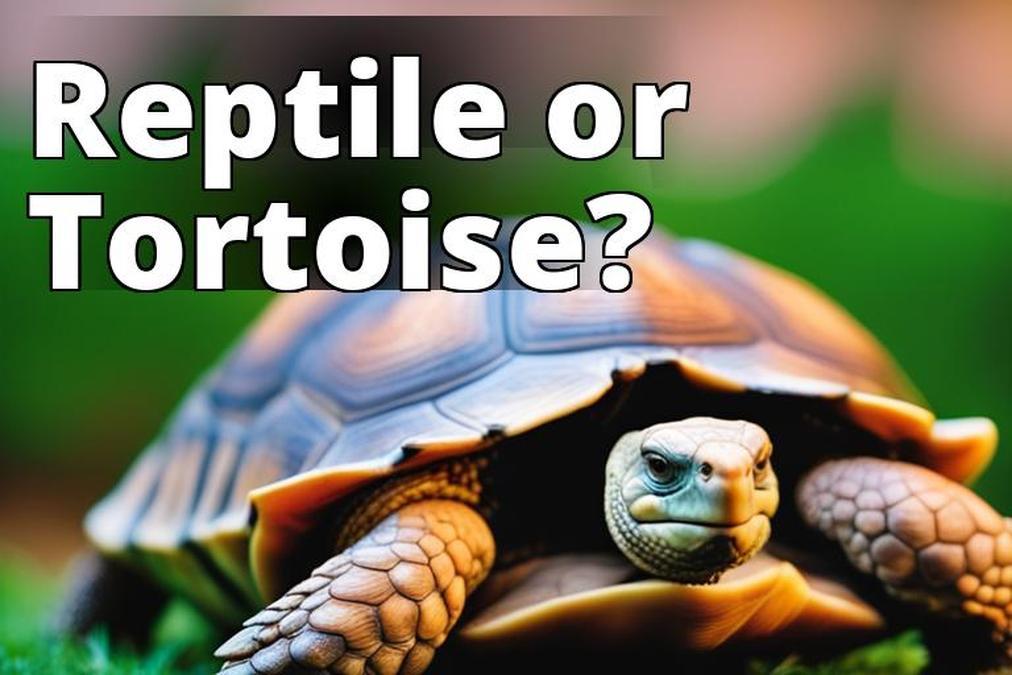When it comes to turtle emotions, there is more than meets the eye. These remarkable creatures, whether pets or sea turtles, possess a capacity for emotions and display emotional intelligence. Unlocking the secrets of their emotional world is not only crucial for their well-being but also for deepening our connection with them.
By understanding the emotional needs of turtles, we can provide them with the care they require, ensuring their happiness and promoting a positive emotional state. Whether they are feeling content and joyful in their environment or experiencing negative emotions such as anxiety or stress, it is important to recognize the signs and take appropriate action.
Key Takeaways
- Turtles have the capacity for emotions and display emotional intelligence.
- Understanding turtle emotions is crucial for providing proper care.
- Turtles can experience both positive and negative emotions.
- Recognizing signs of negative emotions is essential for addressing their well-being.
- By promoting positive emotions, we can enhance their overall emotional health.
The Importance of Emotional Well-being in Turtles
Turtles are fascinating creatures that possess the ability to experience emotions. Understanding and addressing their emotional needs is crucial for their overall well-being. By promoting positive emotions, we can enhance their quality of life and establish a harmonious bond with these remarkable creatures.
Like any living being, turtles have an innate need for emotional fulfillment. Their behavior and emotions are closely intertwined, making it essential to create a nurturing environment that caters to their emotional well-being. By providing appropriate care, we can ensure that turtles feel safe, secure, and content.
When turtles are in a positive emotional state, they exhibit behaviors that reflect their well-being. They may engage in exploratory behaviors, show curiosity towards their surroundings, and display a healthy appetite. These signs indicate that they are content and emotionally satisfied.
On the other hand, negative emotions can manifest in turtles when their emotional needs are not met. They may exhibit signs of stress, such as decreased appetite, agitation, or isolation. It is crucial to recognize these signs and take appropriate measures to address the underlying cause of their distress.
Creating a stimulating and enriching environment is key to promoting positive emotions in turtles. Providing them with opportunities for mental stimulation, such as interactive toys or puzzles, can prevent boredom and ensure their emotional health. Additionally, maintaining optimal temperature, lighting, and a balanced diet contributes to their overall well-being.
The Emotional Needs of Turtles
In order to cater to the emotional needs of turtles, it is essential to understand their natural behavior and instincts. Turtles are social animals and thrive when they have habitats that allow for social interaction. Providing appropriate tank size and companionship, if applicable, can help fulfill their social needs.
Turtles also require a sense of security and safety. Creating hiding spots in their enclosure, such as caves or plants, gives them a place to retreat and feel protected. These hiding spots also mimic their natural habitat, providing them with a sense of familiarity and comfort.
In conclusion, emotional well-being plays a significant role in the overall health and happiness of turtles. By understanding their behavior and emotions, we can ensure that their emotional needs are met, leading to a fulfilling and enriched life for these amazing creatures.
Exploring Turtle Emotions: What Do They Feel?
Turtles, like any other living beings, have the capacity to experience a range of emotions. Observing their behavior and body language can give us valuable insights into their emotional state. When turtles are feeling happy and content, they display certain signs that indicate their positive emotional state.
When a turtle is happy, it may exhibit behaviors such as swimming around energetically, basking in the sun, or munching eagerly on its favorite food. Their eyes may appear alert and bright, and they may interact with their environment in a curious and playful manner.
These behaviors suggest that a turtle’s needs are being met, and it is enjoying its surroundings. Creating a comfortable and enriching environment for turtles is essential in promoting their emotional well-being. By ensuring they have the appropriate temperature, lighting, and a varied diet, we can contribute to their happiness.
It is important to note that each turtle may have its own unique preferences and behaviors when it comes to displaying happiness. Caregivers should take the time to observe and understand their turtle’s individual expressions of joy, tailoring their care accordingly.
| Emotional State | Behaviors and Signs |
|---|---|
| Happy | Active swimming, basking in the sun, eager eating, bright eyes, playful interaction |
| Content | Relaxed and calm demeanor, steady appetite, exploring their habitat |
| Curious | Investigating their environment, showing interest in new stimuli, alert body language |

Understanding and appreciating turtle emotions is crucial for providing them with the care they deserve. By recognizing their emotional state and responding appropriately, we can foster a deep connection and promote their overall well-being.
Signs of Negative Emotions in Turtles
Turtles, like any other animals, can experience negative emotions such as anxiety and stress. It’s important for turtle caregivers to be able to recognize the signs of these emotions in order to address them and promote their well-being. Some common signs of negative emotions in turtles include:
- Decreased appetite: If a turtle suddenly loses interest in food or shows a significant decrease in appetite, it could be a sign of distress or sadness.
- Lethargy: Turtles that appear unusually tired or lack energy may be experiencing negative emotions. They may spend more time hiding or moving slowly.
- Withdrawal: Turtles that typically enjoy interacting with their environment or human caretakers may become more withdrawn or avoidant when experiencing negative emotions.
- Aggression: In some cases, turtles may display aggression as a response to negative emotions. They may snap or bite, showing signs of irritability or frustration.
By observing these behaviors, turtle caregivers can take appropriate action to identify and address the underlying causes of their negative emotions. It’s important to create a calm and safe environment, ensure proper nutrition and temperature, and provide opportunities for mental stimulation to alleviate stress and promote emotional well-being.
Bonding with Turtles: Do They Express Love?
While turtles may not express love in the same way as humans do, they can form bonds with their human caregivers. Through regular interaction, positive reinforcement, and providing a nurturing environment, turtles can develop trust and show signs of affection towards their caretakers.
Turtles are known for their gentle and calm nature, and when they form a bond with their human companion, it can be a rewarding experience. They may show their affection through behaviors such as recognizing their caregiver, approaching them, and allowing physical contact like gentle touches or petting. These gestures may not resemble love as we know it, but they demonstrate a sense of trust and connection between the turtle and the human.
“Turtles, like any other animals, have their own unique way of expressing emotions and forming relationships. While their expressions of love may be different from ours, their bond with humans can be equally meaningful.”
Building a bond with a turtle requires time, patience, and consistency. It’s essential to understand their needs, provide them with a comfortable environment, and handle them gently. This helps create a sense of security and reassurance, allowing the turtle to feel safe and develop a strong connection with their caregiver.
By nurturing this bond, caretakers can experience a deep sense of companionship and fulfillment, knowing that they have earned the trust and affection of these fascinating creatures.
Promoting Positive Emotions in Turtles
Promoting positive emotions in turtles is essential for enhancing their emotional health and overall well-being. Creating a safe and enriching environment is a key factor in ensuring their emotional needs are met. Here are some strategies to promote positive emotions in turtles:
- Provide a suitable habitat: Turtles require a well-maintained habitat that includes proper temperature, lighting, and water quality. A comfortable environment contributes to their emotional well-being.
- Offer a varied diet: Providing a nutritious and diverse diet is important for a turtle’s physical and emotional health. Ensure their diet includes a mix of vegetables, fruits, and proteins suitable for their species.
- Engage in interactive play: Turtles can benefit from mental stimulation through interactive toys and puzzles. These activities help keep their minds active and promote positive emotions.
- Encourage exercise: Regular exercise is essential for turtles’ physical and emotional well-being. Create opportunities for them to move around, explore their environment, and engage in natural behaviors.
Creating a positive and nurturing environment for turtles is key to their emotional well-being. By addressing their physical, mental, and social needs, we can enhance their emotional health and promote a harmonious bond with these fascinating creatures.
Promoting positive emotions in turtles is a continuous process that requires attentive care and an understanding of their specific needs. By implementing strategies like the ones mentioned above, turtle owners can contribute to their pets’ emotional well-being and help them thrive.

Benefits of Emotional Intelligence in Turtle Care:
- Enhanced understanding: By recognizing and understanding a turtle’s emotions, caretakers can better address their needs and provide appropriate care.
- Positive emotional environment: Responding to a turtle’s emotions fosters a positive emotional environment, promoting their overall wellbeing.
- Bonding and trust: Emotional intelligence allows us to develop a strong bond and trust with turtles, enriching both their lives and ours.
- Improved health: By addressing negative emotions and reducing stress, emotional intelligence contributes to improved physical health in turtles.
- Mental stimulation: Understanding emotions helps us provide mental stimulation, ensuring turtles lead enriched lives.
| Emotional Intelligence in Turtle Care | |
|---|---|
| 1 | Recognizing and responding to a turtle’s emotions |
| 2 | Promoting a positive emotional environment |
| 3 | Building a strong bond and trust with turtles |
| 4 | Addressing negative emotions and reducing stress |
| 5 | Providing mental stimulation for enriched lives |
The Connection Between Turtle Behavior and Emotions
Turtle behavior is closely intertwined with their emotions. When turtles exhibit certain behaviors such as restlessness, pacing, or repetitive actions, it may indicate that they are feeling bored or unstimulated. Boredom in turtles can have a negative impact on their overall well-being and may lead to issues such as stress and decreased appetite.
To address boredom in turtles, it is important to provide environmental enrichment and engaging activities. This can include adding objects like rocks, logs, or plants to their enclosure to create a more stimulating environment. Additionally, introducing interactive toys and puzzles can keep turtles mentally engaged and prevent them from becoming bored.
Observing their behavior and making changes based on their responses is key to finding the right balance of stimulation for each individual turtle. Some turtles may prefer more physical activities, while others may enjoy exploring new textures or solving puzzles. By catering to their specific preferences and providing a variety of enrichment options, we can ensure that turtles remain mentally stimulated and emotionally fulfilled.
| Turtle Behavior | Emotional Significance |
|---|---|
| Restlessness | Indicates potential boredom or lack of stimulation |
| Pacing | May suggest frustration or a desire for a larger territory |
| Repetitive actions | Could be a sign of stress or an attempt to self-soothe |
Turtles and Self-Regulation: The Turtle Technique
Turtles, just like humans, can benefit from self-regulation techniques. One such technique is the Turtle Technique, which involves taking deep breaths and thinking before acting. This teaching tool, commonly used in early childhood education, helps children regulate their emotions and make wise choices. Applying similar principles to turtles can assist them in managing their own emotions and promoting their overall well-being.
The Turtle Technique emphasizes creating a calm and secure environment for turtles, allowing them to feel safe and at ease. This can be achieved by providing them with a suitable habitat that mimics their natural surroundings. Turtles thrive when they have access to clean water, appropriate lighting, and a comfortable basking area. By ensuring their physical needs are met, we can help them regulate their emotions more effectively.
Just as a turtle retreats into its shell for protection, the Turtle Technique teaches us the importance of taking a step back and pausing before reacting. By practicing this technique, turtles can learn to navigate their emotions and make choices that align with their well-being.
Understanding turtle psychology and emotions is crucial for their care and emotional health. By applying the Turtle Technique and providing a calm environment, we can help turtles regulate their emotions and promote a positive emotional state. This, in turn, enhances their overall well-being and contributes to a harmonious bond between turtles and their caretakers.
Turtle Emotions in the Natural World
Sea turtles, in their natural habitat, experience a wide range of emotions and display behaviors that indicate their emotional well-being. These remarkable creatures are deeply influenced by environmental factors such as temperature, water quality, and the availability of food. Understanding the emotional needs of sea turtles is crucial for their survival and conservation efforts.
Studies have shown that sea turtles exhibit signs of positive emotions when they are in a favorable environment. They display behaviors such as increased activity, curiosity, and social interaction. These indicators suggest that they are experiencing emotional well-being, contentment, and a sense of security.
On the other hand, when sea turtles are exposed to stressful conditions, they exhibit signs of negative emotions. These may include reduced activity levels, restlessness, and attempts to escape. It’s essential to recognize these signs and take appropriate measures to mitigate the stressors and ensure their emotional well-being.
Environmental factors influencing sea turtle emotions
The emotional well-being of sea turtles is intricately linked to their environment. Here are some key factors that can impact their emotions:
- Temperature: Sea turtles are ectothermic, meaning their body temperature is regulated by the surrounding environment. Extreme temperature fluctuations can cause stress and negatively affect their emotional state.
- Water Quality: Clean and unpolluted water is vital for the well-being of sea turtles. Poor water quality can lead to health issues and emotional distress.
- Food Availability: Adequate food supply is essential for sea turtles’ physical and emotional health. Limited access to food can cause anxiety and frustration.
By understanding and addressing these environmental factors, conservationists and researchers can promote the emotional well-being of sea turtles, contributing to their overall health and survival.
| Emotional Well-being Factors | Positive Indicators | Negative Indicators |
|---|---|---|
| Temperature | Increased activity and exploration | Reduced activity and attempts to escape |
| Water Quality | Healthy appearance and behavior | Physical abnormalities and lethargy |
| Food Availability | Adequate feeding and foraging behavior | Decreased appetite and weight loss |
Turtle Symbolism: A Deeper Meaning
Throughout history, turtles have held profound symbolism in various cultures and spiritual beliefs. They are often associated with longevity, wisdom, and protection. Examining turtle symbolism and mythology provides deep insights into the significance of these majestic creatures beyond their physical and emotional attributes.
The Symbolic Significance of Turtles
In many cultures, turtles symbolize longevity and are revered for their ability to live for many years. Their slow and steady pace represents patience, endurance, and the importance of taking things one step at a time. Turtles also symbolize wisdom and knowledge, as their wisdom is believed to grow over time, just like the rings on a tree.
Furthermore, turtles are seen as symbols of protection. The hard shell that encompasses their body embodies a shield against harm, serving as a reminder to stay grounded and protected in the face of adversity. In Native American traditions, turtles are often associated with the earth element, symbolizing stability, grounding, and a deep connection with the natural world.
Turtle Mythology and Spiritual Beliefs
In many mythologies, turtles play significant roles and are associated with creation stories and divine beings. For example, in Hindu mythology, the turtle is considered an avatar of Lord Vishnu, one of the most important deities. In this context, the turtle represents stability, harmony, and protection.
Similarly, in Chinese mythology, the turtle is associated with the cosmic order of the universe. It is believed to carry the world on its back, symbolizing balance, order, and the interconnectivity of all things. The intricate patterns on a turtle’s shell are also believed to represent the stars and the celestial realm.
Appreciating the Spiritual Connection with Turtles
Exploring turtle symbolism allows us to deepen our understanding of the natural world and our place within it. It encourages us to embrace qualities such as patience, wisdom, protection, and harmony. By connecting with the spiritual significance of turtles, we can gain valuable insights and foster a deeper appreciation for these incredible creatures and the lessons they offer.
| Turtle Symbolism | Meaning |
|---|---|
| Longevity | Represents a long and fulfilling life |
| Wisdom | Symbolizes knowledge and growth over time |
| Protection | Portrays a shield against harm and stability |
| Harmony | Reflects balance and interconnectedness |
Conclusion
The emotional well-being of turtles is a fascinating subject that warrants further exploration. By understanding turtle emotions, we can provide them with optimal care and enhance our connection with these remarkable creatures. Their emotional capacity, behavior patterns, and environmental needs all play a significant role in their overall well-being.
Promoting positive emotions in turtles is essential for their emotional health. By creating a safe and enriching environment, providing the right food and temperature, and offering mental stimulation through interactive toys, we can contribute to their emotional well-being. Recognizing their emotions and responding appropriately is crucial in fostering a harmonious bond between turtles and their owners.
Ultimately, understanding turtle emotions is not only beneficial for the turtles themselves but also for us as caretakers. By delving into their emotional world, we can develop a deeper appreciation for these incredible creatures and provide them with the care they deserve. Through this understanding, we can ensure the emotional well-being of turtles and strengthen our connection with them.
FAQ
Can turtles experience emotions?
Yes, turtles have the capacity for emotions and display emotional intelligence.
How can I tell if my turtle is happy?
Observing their behavior and body language can give insights into their emotional state. Signs of happiness may include a content demeanor, engagement with their environment, and a healthy appetite.
What are the signs of distress or sadness in turtles?
Signs of distress or sadness in turtles may include a decreased appetite, lethargy, withdrawal, and aggression.
Do turtles form bonds with their human caretakers?
Yes, through regular interaction, positive reinforcement, and a nurturing environment, turtles can develop trust and show signs of affection towards their caretakers.
How can I promote positive emotions in my turtle?
Providing a safe and enriching environment, offering proper food, temperature, and lighting, and creating opportunities for mental stimulation can enhance your turtle’s emotional well-being.
What is the importance of emotional intelligence in turtle care?
Emotional intelligence plays a significant role in a turtle’s overall well-being. Recognizing their emotions and responding appropriately can support their emotional health and create a harmonious bond.
How can I alleviate boredom in my turtle?
Providing environmental enrichment, engaging activities, and mental stimulation, such as puzzles and interactive toys, can alleviate boredom and enhance your turtle’s emotional well-being.
Can turtles engage in self-regulation?
Yes, turtles can benefit from a calm and secure environment that promotes self-regulation.
Do sea turtles experience emotions?
Yes, environmental factors such as temperature, water quality, and food availability can impact the emotions and overall health of sea turtles.
What is the symbolism behind turtles?
Turtles hold symbolic meanings in various cultures and spiritual beliefs. They can represent longevity, perseverance, protection, healing, and transformation.
How can understanding turtle emotions improve their care?
Understanding turtle emotions allows us to provide optimal care, promote positive emotions, and ensure their emotional well-being.







